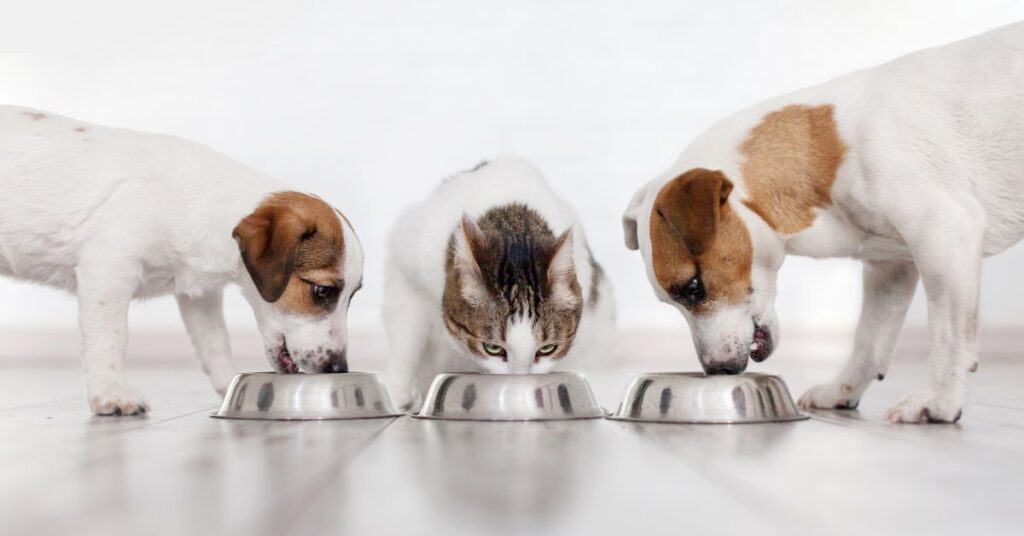
Product Selection
If you need to change your pet’s diet, it’s likely because something has changed for them, such as life stage, activity level or weight change. Start by selecting a product designed to address the needs of your pet:
- Age (such as: transition from Puppy to Adult or Adult to Senior)
- Allergies
- Activity Level Changes
- Weight Changes
- Health Condition
Managing the Transition
Quick changes to your pet’s diet can lead to intestinal upset, which can include vomiting, diarrhea and life threatening pancreatitis. Food changes in a pet’s life are not uncommon, so it’s best to know how to handle the change.
- Keep your daily feeding times regular and consistent.
- Change feed gradually, preferably over a 5-7 day timeline. Some cats can be a bit finicky, so you may need to lengthen the change out over 10-14 days (See Graphic Below).
- If you see any resistance to an increase, go back to the last acceptable amount and then increase the
percentage at a slower pace. - Despite a gradual food transition, if your pet shows any signs of illness such as nausea, vomiting, diarrhea or an arched body posture, contact your veterinarian immediately.
- Remember to always provide fresh, clean water for your pet. Water maintains hydration and helps to aid indigestion and absorption of beneficial nutrients.

Information and graphics in this article were obtained from Cargill, Incorporated.


